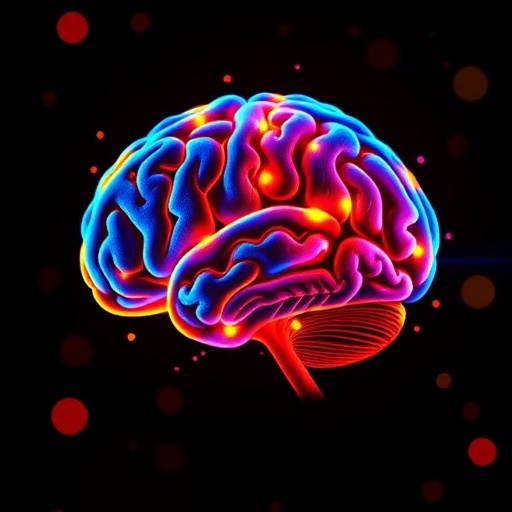In a groundbreaking advancement at the intersection of neuroscience and psychiatry, recent research has revealed how the brain’s dynamic neural responses to working memory demands can forecast the success of cognitive behavioral therapy (CBT) in patients diagnosed with obsessive-compulsive disorder (OCD). This pioneering study delivers compelling evidence that neural activity modulation, contingent upon working memory load, may serve as a predictive biomarker for therapeutic responsiveness, augmenting personalized treatment protocols and enhancing clinical outcomes for individuals grappling with this debilitating condition.
Obsessive-compulsive disorder, characterized by intrusive thoughts and ritualistic behaviors, has long posed challenges in predicting which patients will benefit most from cognitive behavioral interventions. Traditionally, clinicians have relied heavily on symptomatic assessments and trial-and-error approaches to tailor therapeutic efforts. The newly published findings disrupt this paradigm by elucidating the neural substrates underpinning cognitive load processing and their correlation with CBT efficacy, thereby paving the way for more targeted and efficacious treatments.
Central to the investigation was the rigorous assessment of working memory—a critical cognitive system responsible for the temporary storage and manipulation of information necessary for complex cognitive tasks. Researchers administered varied working memory load tasks while monitoring subjects’ neural activity using advanced neuroimaging techniques. By systematically increasing cognitive demand, they observed the brain’s adaptive responses, particularly within regions integral to executive function and emotional regulation.
The study revealed that individuals exhibiting a distinctive modulation pattern in neural circuits associated with working memory—specifically, their ability to flexibly increase or decrease activation in response to cognitive load—were more likely to demonstrate significant symptom improvement following a course of CBT. This suggests that the brain’s intrinsic adaptability under cognitive stress conditions can serve as a valuable marker for therapeutic potential.
Neuroimaging data highlighted the involvement of prefrontal and parietal cortices, areas known for their role in attentional control and working memory processes, with additional modulation noted in limbic structures that regulate emotions. The heightened or dampened neural responsiveness under varying memory loads reflected an underlying neurobiological capacity that influences how patients process and integrate therapeutic interventions targeting their obsessive-compulsive symptoms.
Methodologically, the research harnessed functional magnetic resonance imaging (fMRI) to capture real-time neural activity during working memory tasks, offering unparalleled resolution in delineating brain-behavior relationships. Participants engaged in tasks requiring the maintenance and manipulation of increasing amounts of information, allowing investigators to map the nuanced shifts in cortical and subcortical engagement as cognitive demand escalated.
Analytically, multivariate models correlated changes in neural activation patterns to post-therapy clinical outcomes, unveiling robust predictive validity. The researchers employed stringent statistical controls and cross-validation strategies to ensure that the observed associations were not artifacts but rather genuine indicators of individual therapeutic trajectories.
These findings carry profound implications for clinical practice. By integrating neurocognitive assessments into diagnostic procedures, clinicians may soon stratify patients based not only on symptomatology but also on neurofunctional profiles, thereby optimizing treatment selection and resource allocation. This approach aligns with the burgeoning field of precision psychiatry, which endeavors to tailor interventions based on individual biological and cognitive markers.
Moreover, the study’s insights illuminate mechanistic pathways through which CBT exerts its effects, enriching theoretical models of OCD pathophysiology. Understanding how cognitive load interacts with neural circuits governing compulsive behaviors can inform the development of adjunctive therapies or cognitive remediation strategies designed to enhance working memory capacity and hence treatment responsiveness.
Beyond OCD, the research methodology and conceptual framework may extend to other psychiatric disorders where cognitive control and emotional regulation deficits interplay, such as anxiety disorders, depression, and schizophrenia. The potential to generalize this biomarker approach could revolutionize mental health treatment paradigms by establishing objective, measurable neurophysiological correlates of therapy efficacy.
Furthermore, this investigation underscores the critical importance of interdisciplinary collaboration between neuroscientists, psychologists, and clinicians. Through converging methodologies—cognitive paradigms, neuroimaging, and clinical trials—the study exemplifies how integrative science can yield transformative insights into complex mental illnesses.
A salient feature of the research is its emphasis on working memory load-dependent modulation—a dynamic concept capturing not just static brain function but the flexible adaptability of neural circuits in response to varying cognitive demands. This contrasts with traditional biomarkers characterized by fixed structural or functional anomalies and highlights the added explanatory power of dynamic neural processes in predicting treatment outcomes.
The researchers also discuss potential future directions, including longitudinal studies to track neural changes throughout therapy, investigations into pharmacological augmentation targeting working memory circuits, and explorations of individualized cognitive training aimed at enhancing neural flexibility prior to or alongside CBT.
Importantly, while the study offers a promising predictive tool, the authors caution against overinterpretation. They advocate for replication in larger, more diverse cohorts to validate the utility and robustness of working memory-dependent neural modulation as a clinical biomarker. Additionally, they acknowledge the complexities of OCD presentations and the need to integrate multimodal data—genetic, behavioral, and neuroimaging—to fully capture the heterogeneity of therapeutic responses.
In conclusion, the demonstrated link between working memory-related neural dynamics and CBT response heralds a paradigm shift toward biomarker-driven, neurocognitively informed psychiatric treatments. By illuminating the neural signatures of treatment receptivity, this research charts an inspiring course toward more effective, personalized care for individuals confronting obsessive-compulsive disorder.
Subject of Research: Working memory load-dependent modulation of neural activity and its predictive value for cognitive behavioral therapy response in obsessive-compulsive disorder.
Article Title: Working memory load-dependent modulation of neural activity predicts response to cognitive behavioral therapy in obsessive-compulsive disorder.
Article References: Heinzel, S., Kaufmann, C., Grützmann, R. et al. Working memory load-dependent modulation of neural activity predicts response to cognitive behavioral therapy in obsessive-compulsive disorder. Transl Psychiatry 15, 422 (2025). https://doi.org/10.1038/s41398-025-03608-9
Image Credits: AI Generated




